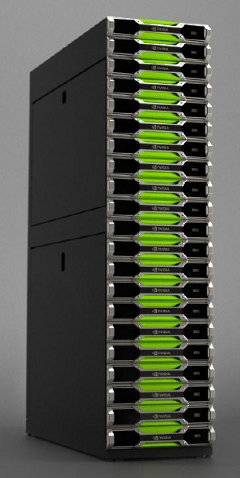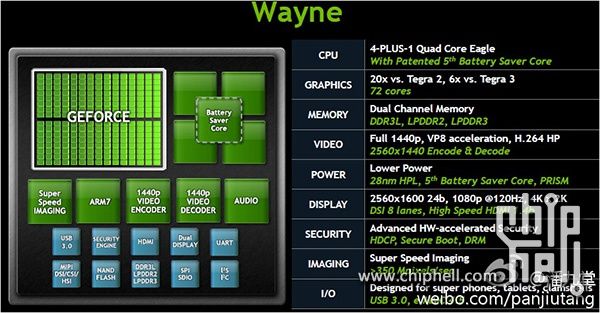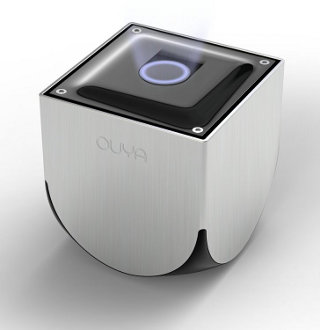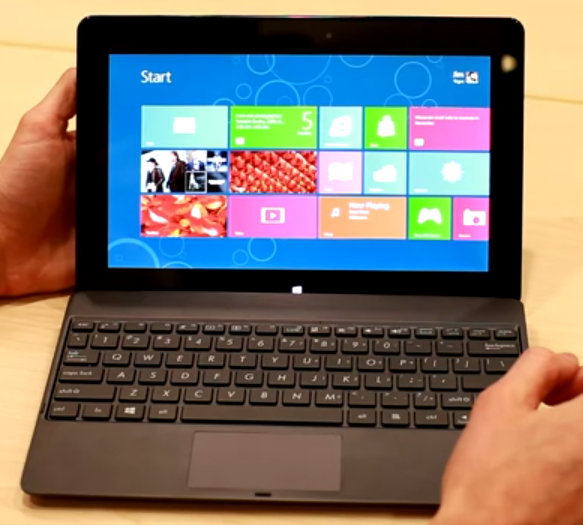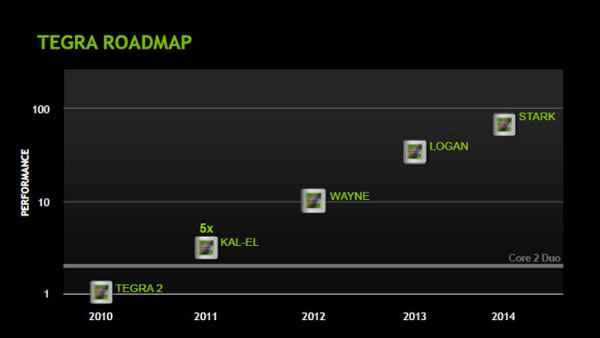As I previously wrote, FOSDEM organizers are slowly uploading FOSDEM 2013 videos. One of the most interesting talk “Open ARM GPU Drivers” is now available. I’ve also uploaded it to YouTube (embedded below) to give it more exposure. Luc Verhaegen has also written a recent blog post entitled “Hey ARM!” where he announces the release of the modified source for Quake 3 Arena demo, and asks ARM to join them in making an open source driver. Open ARM GPU Drivers @ FOSDEM2013 This session covers the following key points: Problem – Binary drivers are mainly designed to run in Android, and it’s very difficult to have proper GPU drivers for Linux, and companies are not interested to release open source drivers or even just documentation, as they are not convinced it will benefit them in any way. Legal – This is actually the main issue, as open sourcing existing driver […]
GPUs Comparison: ARM Mali vs Vivante GCxxx vs PowerVR SGX vs Nvidia Geforce ULP
I’m always very confused when it comes to comparing GPUs in different SoCs, and I could not really find comparisons on the web, so I’m going to give it a try even though, as you’re going to find out, it’s actually quite a challenge. There are mainly 4 companies that provide GPUs: ARM, Imagination Technologies, Vivante and Nvidia. [Update: Two comments mentioned Qualcomm Adreno and Broadcom VideoCore are missing from the list. Maybe I’ll do an update later]. Each company offers many different versions and flavors of their GPU as summarized below. ARM Imagination Technologies Vivante Nvidia Mali-400 Series: Mali-400 MP Mali-450 MP Mali-600 Series Mali-T604 Mali-T624 Mali-T628 Mali-T658 Mali-T678 PowerVR SGX Series 5: SGX520 SGX530 SGX531 SGX535 SGX540 SGX545 PowerVR SGX Series 5XT: SGX543MP1-16 SGX544MP1-16 SGX554MP1-16 PowerVR SGX Series 6: G6200 G6230 G6400 G6430 G6600 2D graphics: GC300 GC350 3D graphics: GC400 GC800 GC1000 GC2000 GC4000 ULP GeForce (Tegra […]
Nvidia GRID Platform, Tegra 4 Processor and Project SHIELD Game Console at CES 2013
CES 2013 has finally started, and Nvidia has had a pretty amazing keynote with some PC gaming announcements such as “GeForce Experience” which is a piece a software that can configure your games settings automatically based on your PC hardware (e.g. processor and GPU), and 3 cloud and mobile devices announcements: Nvidia GRID Platform – Cloud Gaming Server with 240 Nvidia GPUs. Nvidia Tegra 4 – Nvidia 4 cores Cortex A15 , 72 GPU and SDR modem SoC for tablets and smartphones. Nvidia Project Shield – Game console with a 5″ display powered by Tegra 4 that can also act as a game controller, and play PC games on your TV. Nvidia GRID Platform NVIDIA GRID Cloud Gaming Platform is comprised of 20 GRID server per rack with a total of 240 Nvidia GPU capable of 200 TFLOPS or the equivalent of 700 Xbox 360. Nvidia GRID render 3D graphics […]
Nvidia Tegra 4 to Feature 4 Cortex A15 Cores, 72 Graphics Cores
According to Nvidia Tegra roadmap, the first Tegra 4 (T40) is due in Q1 2013, before T43 & AP40 come out in Q3 2013. Information is still sparse, but somebody posted a leaked slide on Chip Hell which gives a few more details about the upcoming Tegra 4 processors. So this is what we currently know about the Tegra T40 processor: CPU – 4x Cortex A15 (Eagle) cores @ 1.8 GHz + a battery saving core (aka companion core). GPU – Geforce GPU with 72 cores providing 20x Tegra 2 performance and 6x Tegra 3’s. Memory – Support for DDR3L, LPDDR2 and LPDDR3 Video – 1440p video encoding and decoding with VP8 and H.264 High Profile hardware acceleration Display – 2560×1600 24-bit, 1080p @ 120Hz, 4K displays via DSI and HDMI interfaces. Power – Lower power than previous generations thanks to 28nm HPL process (low power with high-k metal gates). Tegra […]
$800 OUYA Development Kit Is Available for Pre-Order
As the OUYA is slowly (but surely?) nearing its launch in March 2013, the OUYA Dev Kit can be pre-ordered for delivery in January 2013. The kit costs $800 and includes an OUYA console, 2 controllers and the ODK ( OUYA Software Development Kit). This devkit is targeted at game developers (Users better just wait the $99 version) who will be able to test their games and apps on OUYA hardware before the official release. The ODK should be available for download and the developer portal launched in December, As a reminder, here are OUYA (updated) specifications: Nvidia Tegra3 quad-core cortex A9 processor 1 GB RAM 8 GB of internal flash storage HDMI port (up to 1080p HD) WiFi 802.11 b/g/n Bluetooth LE 4.0 Ethernet USB 2.0 port Wireless controller with standard controls (two analog sticks, d-pad, eight action buttons, a system button), a touchpad Android 4.1 Jelly Bean If […]
Nvidia Has Ported Unreal Engine 3 to Windows RT
After Archos GamePad, more gaming news today, as Nvidia announced Unreal Engine 3 port to Windows RT. The company showcased Epic Citadel demo on Nvidia Tegra 3 based Asus Vivo Tab RT (previously known as Tablet 600) at a press conference held at IFA 2012, in Berlin. The demo above is the full PC implementation running on ARM hardware and renders graphics at 35 to 40fps. The Unreal Engine 3 “Epic Citadel” demo implements the full DirectX 9 pipeline, with shaders and materials. Nvidia also announced that UE3 Windows RT code is available to licensees from Epic now. Jean-Luc Aufranc (CNXSoft)Jean-Luc started CNX Software in 2010 as a part-time endeavor, before quitting his job as a software engineering manager, and starting to write daily news, and reviews full time later in 2011. www.cnx-software.com
ASUS Windows RT Tablet 600: The First Ever Windows 8 Tablet Is Powered By Nvidia Tegra 3
Nvidia announced on its blog that ASUS unveiled a Windows RT (previously known as Windows 8 on ARM) tablet powered by Nvidia Tegra 3 and featuring a 10.1-inch touch screen display. This is a convertible tablet with an optional keyboard dock, so it’s like a transformer with Windows 8. The Asus 600 is said to have the following specifications: Nvidia Tegra 3 (Quad Core Cortex A9) 2 GB RAM 10.1-inch Super IPS+ display (Resolution 1366 x 768) 8MP rear camera with an LED flash 2MP front camera. WiFi and Bluetooth 4.0 connectivity GPS support Gyroscope, compass and NFC. You can watch the hands-on video below provided by Nvidia. ASUS didn’t disclose pricing or availability. Jean-Luc Aufranc (CNXSoft)Jean-Luc started CNX Software in 2010 as a part-time endeavor, before quitting his job as a software engineering manager, and starting to write daily news, and reviews full time later in 2011. www.cnx-software.com
Nvidia Tegra 4 Details and Roadmap Leaked
Last year, Nvidia announced the Tegra family roadmap until 2014 with Kal-El (NVidia Tegra 3), Wayne (NVidia Tegra 4), Logan (Nvidia Tegra 5) and Stark (Nvidia Tegra 6). The first half of 2012 should be the time where the Tegra 4 (codenamed Wayne) should be announced. In the meantime, VRZone shared a slide showing the different versions of Tegra 4 and the detailed roadmap. NVidia Tegra 4 processor will used the same 4-PLUS-1 configuration (4 main cores + 1 low power companion core) as Nvidia Tegra 3, except the Cortex A9 cores will be replaced by Cortex A15 and the chipset will run at frequencies ranging from 1.2GHz to 2.0GHz. There will be 4 flavors of Tegra 4: T40 – Quad Core Cortex A15 @ 1.8 GHz aimed at 10″ high-end tablets. T43 – Quad Core Cortex A15 @ 2.0 GHz aimed at 10″ high-end tablets. AP40 – Quad Core […]




